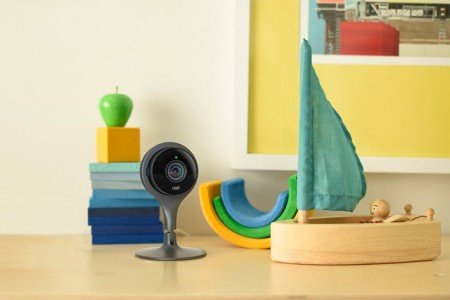More about Internet of Things news as Google-owned Nest Labs has launched a camera that senses movement in a user’s home and alerts them via a smartphone app.
On Wednesday, Nest announced a new home monitoring camera dubbed Nest Cam. The brand-new camera has a cloud-based subscription service, Nest Aware, which allows to save 10 days of video footage captured from the device.
This cloud service costs $10 per month. Paying $5 a month, customers can add another camera to the subscription. Plus, it’s also possible to keep 30 days of continuous video off one camera for $30 per month.
It’s about the “home taking care of itself and taking care of you.You don’t have to program your home. It should know what to do,” says Maxime Veron, head of hardware product marketing at Nest, according to USA Today.
As for Nest Cam’s potential, it includes an 8X digital zoom, speaker and mic. In addition, the home monitoring camera captures 1080p high-def video and uses eight infrared LEDs.
Sounds good? Surely! But it is not as good as it could be. The minimal Nest’s nature shows an important problem with home automation and the Internet of Things in general.
Do the great Nest’s products talk to each other? Yes, they do. Do they talk to other smart home devices? No, they don’t. Obviously, that problem makes customers keep waiting for the long-promised Internet of Things.
Naturally, Nest would like to connect their products to other smart devices. So, the company’s CEO, Tony Fadell, spoke about a programming language, Weave, that Google announced at its recent I/O developer conference. Nest products are going to support this communications protocol via a new IoT operating system called Brillo.
“It provides all the fundamental building blocks a developer needs to build a connected product,” said Greg Hu speaking of the software for the Internet of Things products that is going to be developed. But still, Weave’s potential is not clear enough.
Well, nowadays too many companies push their hardware onto the much-promoted Internet of Things. Samsung, Intel and Cisco announced Iotivity. Apple is developing its HomeKit. In addition to that, there are AllJoyn and Zigbee. Unfortunately, all these open-source systems can be just ironically called the Internet of Things.
However, Mashable reads that Nest is negotiating with insurance companies to give their customers a 5% discount on their monthly premiums in case they have a Nest Protect, the smoke alarm. It’s a nice step to make users feel less confused while waiting for the ‘true’ Internet of Things. Or feel like they are making hard cash savings at least.
next